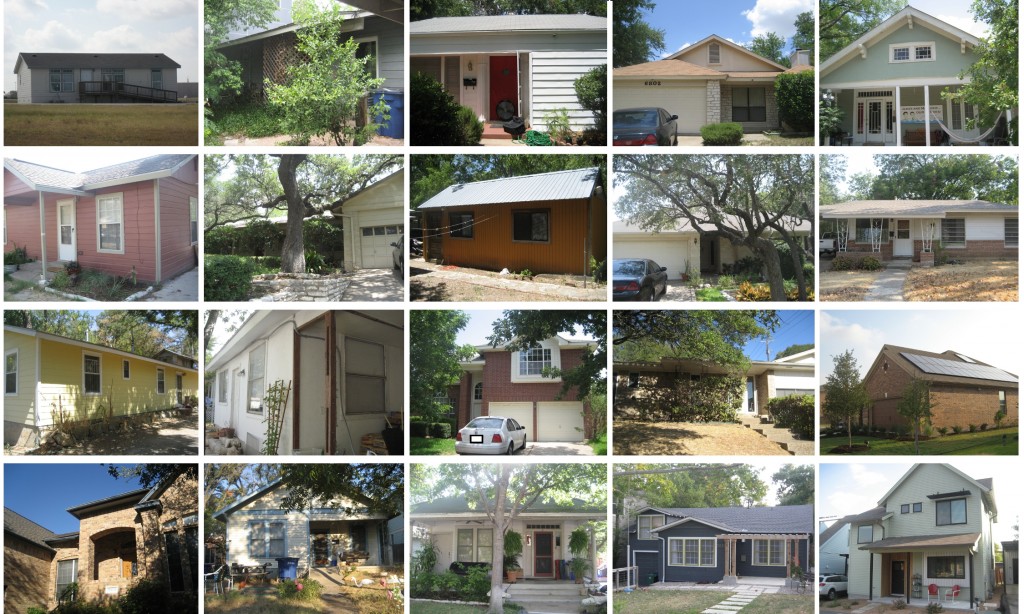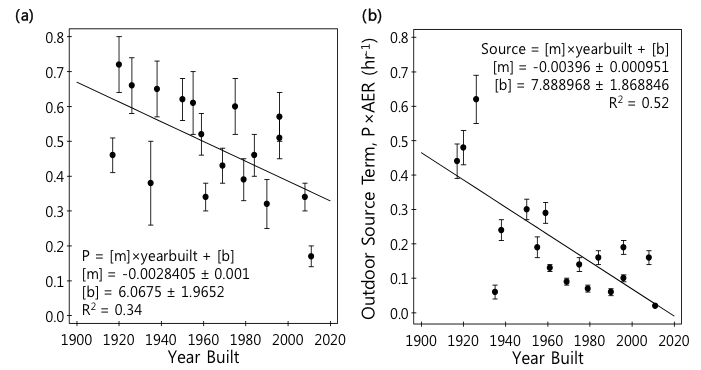Particle infiltration into homes
This work improved knowledge of outdoor particle infiltration into buildings by (i) refining a particle penetration test method that minimizes the duration and invasiveness required by individual tests without sacrificing accuracy, (ii) applying the method in an unoccupied manufactured test house and 18 single-family homes in Austin, Texas, USA, and (iii) exploring correlations between particle penetration and building characteristics, including results from blower door air leakage tests.
The mean (±s.d.) measured penetration factor* of submicron particles (20–1000 nm, not size-resolved) was 0.47±0.15 in 19 residences that relied on infiltration for ventilation air, ranging from 0.17±0.03 to 0.72±0.08.
(*Note that an envelope penetration factor of 1 means that outdoor particles infiltration 100% efficiently, while a penetration factor of 0 means that all outdoor particles deposit within the envelope and do not enter the indoor environment.)
Particle penetration factors (P) and outdoor particle source terms (P × air exchange rates) were both significantly and positively correlated with results from blower door air leakage tests. Outdoor particle source terms were also significantly and negatively correlated with the year of construction.
These results suggest that occupants of leakier and older homes are exposed to higher indoor concentrations of outdoor submicron particles than those in tighter and newer homes, and that simple air leakage tests may be able to provide an approximate prediction of outdoor particle infiltration into single-family residences.
Read the full paper published in Indoor Air in 2012 here.
Acknowledgements
This work was performed by Brent Stephens while he was a Ph.D. student under the supervision of Dr. Jeffrey Siegel at the University of Texas at Austin. Portions of this work were funded by the National Science Foundation (IGERT Award DGE 0549428) and a Continuing Fellowshipfrom the Graduate School at the University of Texas at Austin. We extend thanks to all of the participants in our study, as well as to Lance Wallace (previously with NIST), who provided valuable advice on quality assurance.



